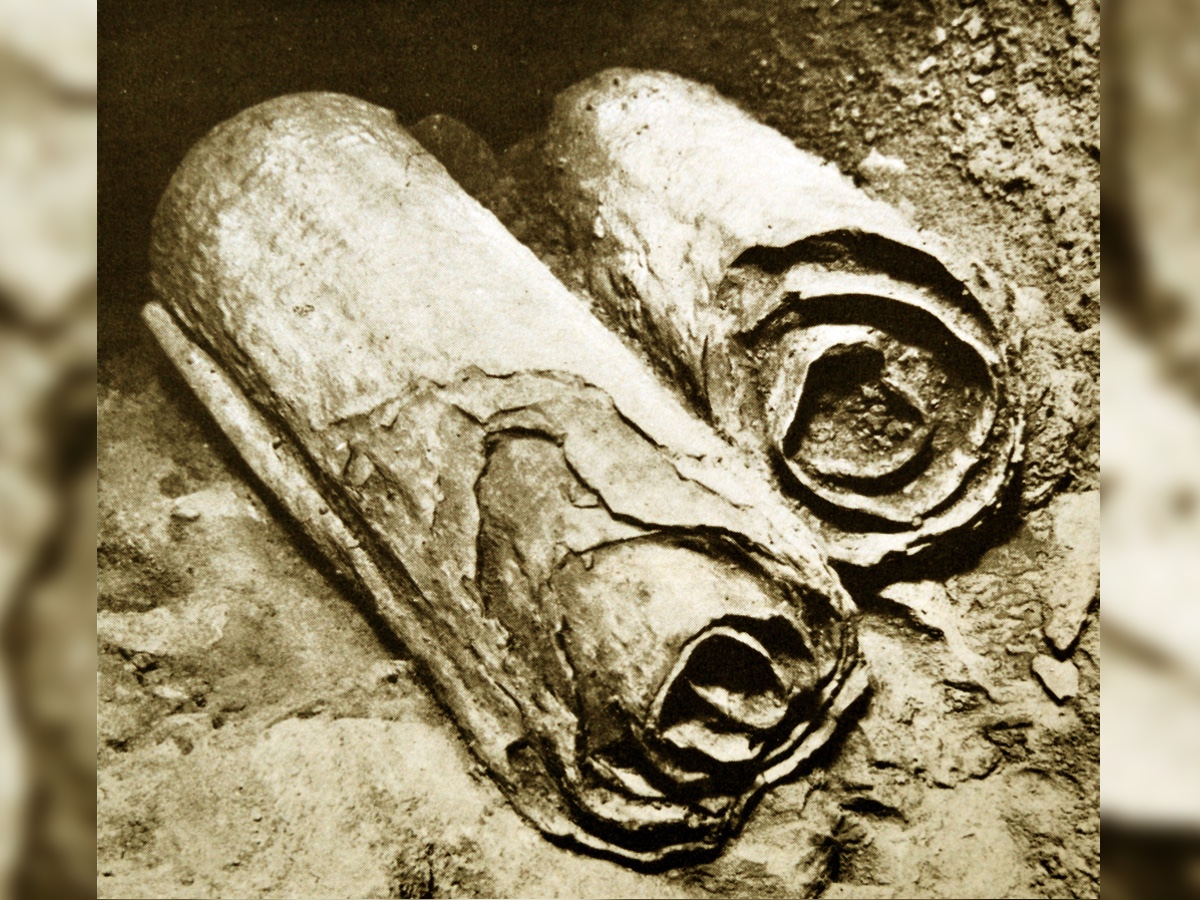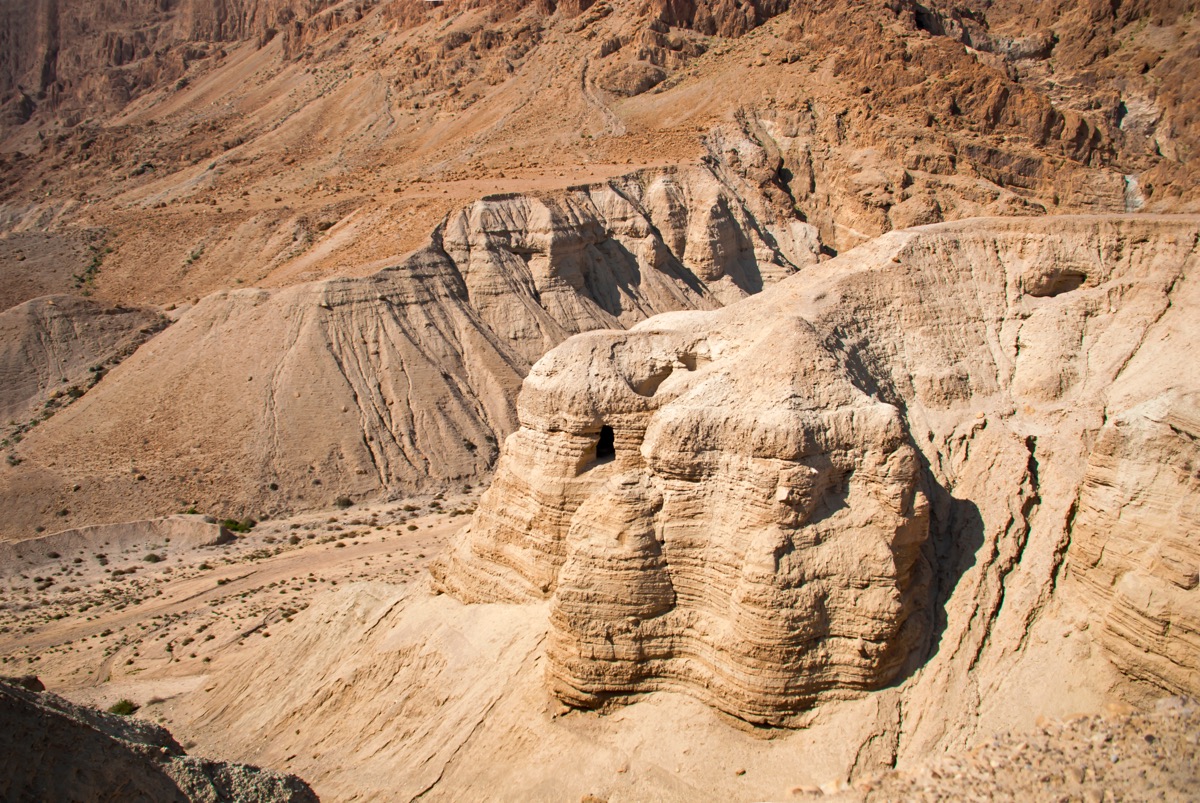Archaeologists Are Looking for Dead Sea Scrolls Inside 2 Newfound Qumran Caves

Archaeologists have discovered two caves near Qumran, in the West Bank, that may hold Dead Sea Scrolls.
So far, the archaeologists excavating the caves have yet to find the remains of any biblical-era manuscripts. However, both caves, now called 53b and 53c, are near caves that held the already-discovered Dead Sea Scrolls, and the team is not done investigating the sites.
The Dead Sea Scrolls consist of the remains of 900 manuscripts found in 12 caves located near Qumran. Many scholars believe that a group called the Essenes lived at Qumran and wrote many of the Dead Sea Scrolls before abandoning the site around A.D. 70, when a revolt against the Romans started.
Caves 1 through 11 were discovered between 1946 and 1956; most of the Dead Sea Scrolls were found in these 11 caves. The 12th cavewas discovered in 2017 but has divulged just one, blank scroll. Inside the cave, archaeologists also found the remains of items used to store scrolls — jars, textiles, rope and string. This indicates that more scrolls existed in Cave 12 in the past but were looted some time ago. [Gallery of Dead Sea Scrolls: A Glimpse of the Past]
The two newfound caves are near the 12th cave, and they also hold evidence of having contained scrolls in the past.
Evidence for scrolls
While looters plundered cave 53b sometime in the past, archaeologists found a bronze cooking pot and "large amounts of pottery representing store jars, flasks, cups and cooking pots, and [the researchers also found] fragments of woven textiles, braided ropes and string," archaeologists Randall Price, of Liberty University in Virginia, and Oren Gutfeld, of Hebrew University of Jerusalem, wrote in the abstract of a paper they presented recently at the American Schools of Oriental Research annual meeting, held in Denver Nov. 14-17. Additionally, an oil lamp was found at the entrance to the cave, they said.
"We have not analyzed all of the pottery from this cave [53b], so we do not know if a scroll jar was present," Price, a professor of divinity at Liberty University in Virginia, told Live Science. The textiles, rope and string found in 53b are similar to those found in cave 12, he said. This means that cave 53b may also have been used to store scrolls.
Get the world’s most fascinating discoveries delivered straight to your inbox.
The bronze cooking pot found in cave 53b dates to sometime between 100 B.C. and 15 B.C., a time when people were living at Qumran. The design of the lamp is similar to those of lamps found at Qumran, Price said, suggesting that the people who lived at Qumran used the cave.
Inside cave 53c, the researchers found a fragment of a scroll jar, providing evidence that scrolls were once stored in that cave. Excavations are underway in cave 53c to determine if it still holds any scrolls.
Gutfeld is a researcher at the Hebrew University of Jerusalem.
- 24 Amazing Archaeological Discoveries
- 30 of the World's Most Valuable Treasures That Are Still Missing
- The 25 Most Mysterious Archaeological Finds on Earth
Originally published on Live Science.

Owen Jarus is a regular contributor to Live Science who writes about archaeology and humans' past. He has also written for The Independent (UK), The Canadian Press (CP) and The Associated Press (AP), among others. Owen has a bachelor of arts degree from the University of Toronto and a journalism degree from Ryerson University.



